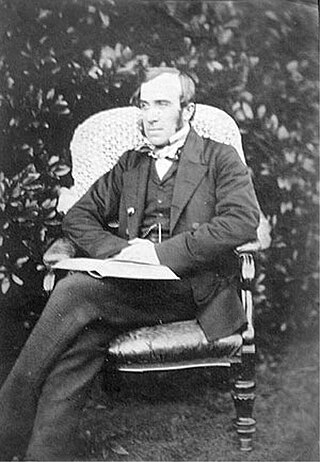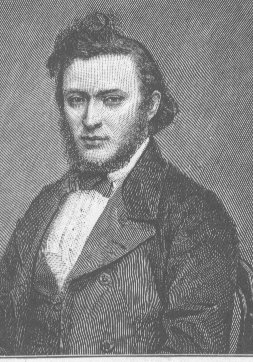Related Research Articles

The East India Company College, or East India College, was an educational establishment situated at Hailey, Hertfordshire, nineteen miles north of London, founded in 1806 to train "writers" (administrators) for the East India Company. It provided general and vocational education for young gentlemen of sixteen to eighteen years old, who were nominated by the Company's directors to writerships in its overseas civil service. The college's counterpart for the training of officers for the company's Presidency armies was Addiscombe Military Seminary, Surrey.

Muhammad Marmaduke Pickthall was an English Islamic scholar noted for his 1930 English translation of the Quran, called The Meaning of the Glorious Koran. His translation of the Quran is one of the most widely known and used in the English-speaking world. A convert from Christianity to Islam, Pickthall was a novelist, esteemed by D. H. Lawrence, H. G. Wells, and E. M. Forster, as well as journalists, political and religious leaders. He declared his conversion to Islam in dramatic fashion after delivering a talk on 'Islam and Progress' on 29 November 1917, to the Muslim Literary Society in Notting Hill, West London.

Sir Monier Monier-Williams was a British scholar who was the second Boden Professor of Sanskrit at Oxford University, England. He studied, documented and taught Asian languages, especially Sanskrit, Persian and Hindustani.

Gottlieb Wilhelm Leitner, also known as Gottlieb William Leitner, was a British orientalist.

Thomas William Chenery was an English scholar and editor of The Times. His diplomatic background and choice of capable reporters helped to revive the paper's reputation for international news.
The History of India, as Told by Its Own Historians is a book comprising translations of medieval Persian chronicles based on the work of Henry Miers Elliot. It was originally published as a set of eight volumes between 1867–1877 in London. The translations were in part overseen by Elliot, whose efforts were then extended and edited posthumously by John Dowson.

Sir Harold Walter Bailey,, who published as H. W. Bailey, was an English scholar of Khotanese, Sanskrit, and the comparative study of Iranian languages.

The Shah Jahan Mosque in Oriental Road, Woking, England, is the first purpose-built mosque in the United Kingdom. Built in 1889, it is located 30 miles (50 km) southwest of London. It is a Grade I listed building.
The Woking Muslim Mission was founded in 1913 by Khwaja Kamal-ud-Din at the Mosque in Woking, 30 miles southwest of London and was managed, from 1914, by members of the Lahore Ahmadiyya Movement. It was run by Lahore Ahmadiyya missionaries until the mid-1960s.

Woking is a town and borough in northwest Surrey, England, around 23 mi (36 km) from central London. It appears in Domesday Book as Wochinges and its name probably derives from that of a Saxon landowner. The earliest evidence of human activity is from the Paleolithic, but the low fertility of the sandy, local soils meant that the area was the least populated part of the county in 1086. Between the mid-17th and mid-19th centuries, new transport links were constructed, including the Wey Navigation, Basingstoke Canal and London to Southampton railway line. The modern town was established in the mid-1860s, as the London Necropolis Company began to sell surplus land surrounding the railway station for development.

The Liverpool Muslim Institute was founded by Abdullah Quilliam in 1887.
Sir Arthur Ernest Cowley, was a British librarian who was Bodley's Librarian from 1919 until a couple of months before his death. He was also a leading Semitic scholar.
Francis Joseph Steingass was a British linguist and orientalist of German Jewish descent.
Matthew Lumsden (1777–1835) was a Scottish orientalist. He was educated at King's College, Aberdeen, Scotland, and held a professorship of Persian and Arabic at the College of Fort William, India.

Sandford Arthur Strong was an English orientalist, art historian and librarian.
The Royal Dramatic College was a home for retired actors in Woking, England; it was opened by the Prince of Wales in 1865, and closed because of financial difficulty in 1877.
Ziauddin Abdul Hayy Desai was an Indian epigraphist associated with the Archaeological Survey of India (ASI). He was also a noted architectural historian and a literary scholar of the Indo-Persianate world as evidenced in his writings.
John Nicholson (1809–1886) was an English landowner and orientalist, known for his command of Hebrew and Arabic.
References
- ↑ "Gottlieb Leitner". The Open University. Retrieved 26 December 2016.
- 1 2 3 "Dr. Gottlieb Wilhelm Leitner". Woking Muslim Mission. Retrieved 18 December 2016.
- ↑ "Shah Jahan Mosque, Woking". Exploring Surrey's Past. Retrieved 26 December 2016.
- ↑ Historic England. "Shah Jehan Mosque, Oriental Road (Grade I) (1264438)". National Heritage List for England . Retrieved 12 March 2018.
- ↑ Hakala, Walter N. (10 September 2020). "Steingass, Francis Joseph (1825–1902)". Oxford Dictionary of National Biography (online ed.). Oxford University Press. doi:10.1093/odnb/9780198614128.013.100747.(Subscription or UK public library membership required.)
- ↑ Rubinstein, W. D. (8 October 2009). "Leitner [formerly Sapier], Gottlieb Wilhelm (1840–1899)". Oxford Dictionary of National Biography (online ed.). Oxford University Press. doi:10.1093/ref:odnb/51109.(Subscription or UK public library membership required.)
- ↑ "The Oriental Institute, Woking". The Tuesday Mirror and Reigate Borough Advertiser. Vol. 3, no. 131. 11 April 1899. p. 2.
- ↑ Watson, Paul (3 June 1988). "Grave news : Aliens have landed". Woking Informer. Vol. 7, no. 22. pp. S2–S3.
- ↑ The War of the Worlds, Chapter IX